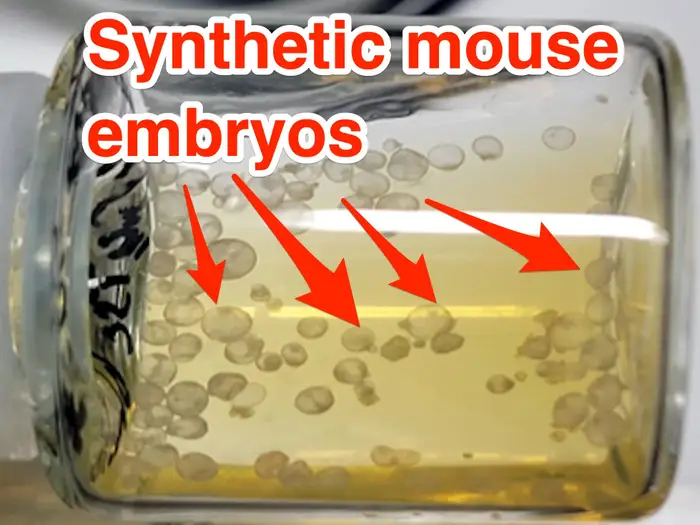By: Ella Wang
To bring new life into this world, a meeting between egg and sperm in a womb is required. However, scientists from the Weizmann Institute of Science in Israel have proven this statement wrong. Researchers have created some of the first fully grown synthetic mouse embryos without an egg, sperm or a womb.
“This is just one step, but a very important step for us to be able to study early development,” Paul Tesar, a developmental biologist at Case Western Reserve University School of Medicine told STAT News. “We’re crossing into the realm of being able to generate an embryo from scratch, and potentially a living organism. It’s been a really notable switch for the field.”
Starting from stem cells of an adult mouse, scientists created a synthetic embryo that nearly replicated a real mouse embryo with a beating heart, blood circulation, folded brain tissue and intestinal tract. The embryo grew in an artificial womb and lasted eight days before it finally stopped.
This experiment was not meant to create mice without a womb, but instead to understand how organs develop and use this knowledge to find new ways to heal people.
A stem cell scientist at the Weizmann Institute of Science who led the work, Jacob Hanna, said that he does not want the technology to be used as a replacement for reproduction. Instead, he hopes to use it as a way to create synthetic human embryo models that mimic the precursors of organs, so the models can be studied and potentially used therapeutically.
For decades, the goal of stem cell therapy has been to use these cells to repair body tissue. Stem cells can develop into any tissue or organ, so potential uses of those cells in the medical field is unlimited, including fixing spinal cord injuries, patching damaged hearts, and curing diabetes. However, turning those cells into complex, functioning tissue has been a challenge and has stunted the growth of this industry. Hanna’s hope is that watching this process unfold during early development will provide important clues.
“This is an important landmark in our understanding of how embryos build themselves,” Alfonso Martinez Arias, a developmental biologist at Pompeu Fabra University in Barcelona said in an email.
Scientists have already marked a new point in history with this discovery. As technology advances and develops, the synthetic embryos are bound to help the lives of many, or destroy them. Only one question remains: “How far are they willing to take their discoveries?”
Link to articles:
https://www.washingtonpost.com/science/2022/08/01/synthetic-mouse-embryo/
https://www.livescience.com/synthetic-mouse-embryos
https://www.theguardian.com/science/2022/aug/03/scientists-create-worlds-first-synthetic-embryos











